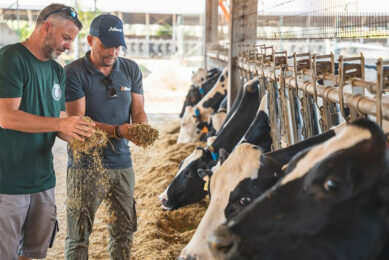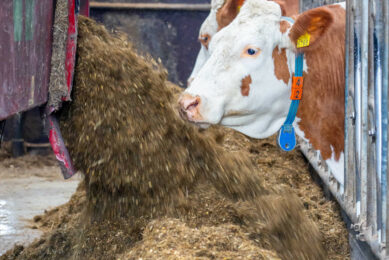Challenges at a Ukrainian dairy farm near the frontline
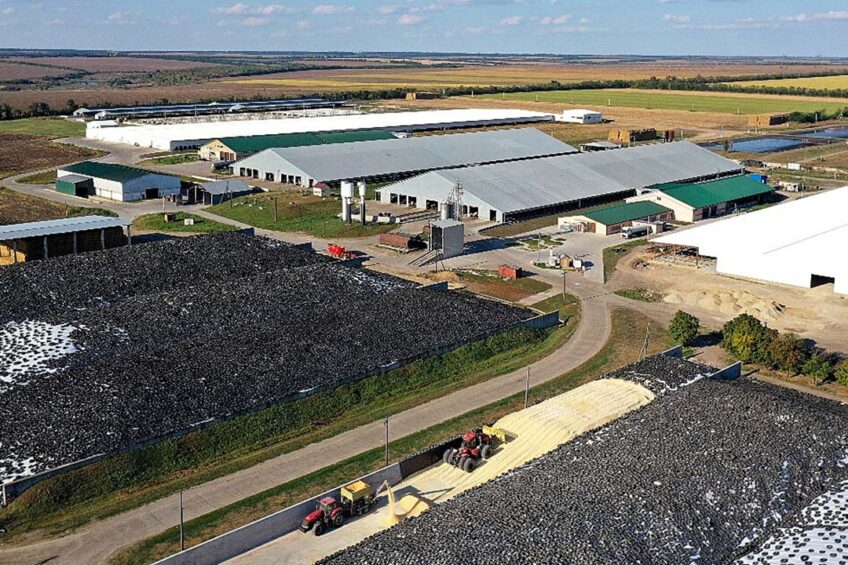
One of Ukraine’s biggest dairy farms that is situated only 60km from the Russian war frontline is battling against a number of daily challenges to survive.
Under constant shelling, the staff at Promin Agricultural LLC dairy farm are up against power shortages, a lack of labour and logistical challenges to keep the farm operating. The farm, located in the Mykolaiv region in south Ukraine, runs 8,600 Holstein dairy cattle in total, of which 3,360 are milking cows. On top of the dairy enterprise, the farm has a large pig herd and operates its own feed mill.
Serhiy Yasevin, director of Promin dairy farm, says: “We have been developing the farm for almost 30 years. Our farm is a member of the Association of Milk Producers of Ukraine and is owned by Oleksandr Mykolayovych Ostapenko.
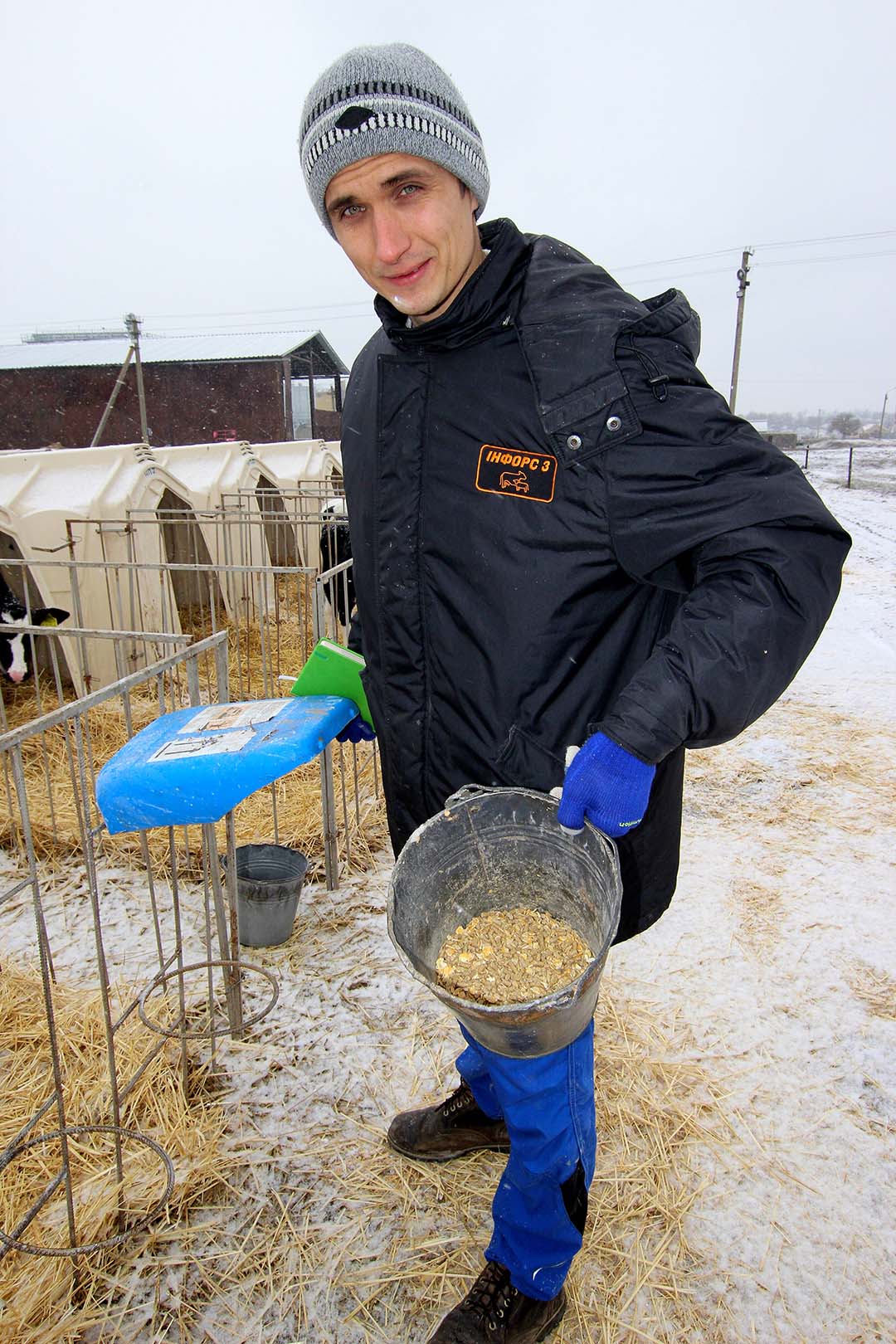
“Promin Agricultural LLC is a family farm, the history of which begins in the 1990s with the unification of 4 farms of 50 hectares each, which later joined neighbouring farms. We now have 7,000 ha and employ over 350 workers. However, around 40 of them have been deployed to serve in the Ukrainian army.”
Milking
The dairy side of the farm started off with 50 cows in 2004 and steadily expanded since then. Currently, daily milk production is 125 tonnes at 3.15% protein and 3.5% butterfat.
“We milk 3 times per day using 2 rotary milking parlours; one has 80 stalls and the other 60 stalls. The 80 stall rotary was built in 2016 and that was the first rotary installed in Ukraine. Due to current issues with the war affecting the processor collecting the milk, we deliver it with 6 milk trucks of our own,” says Serhiy, adding, “Our cows are kept in 3 cowsheds; 2 sheds hold 1,000 cows each and a third, just built in 2022, holds 2,300 cows, usually the high producing group, freshly calved and dry cows.”
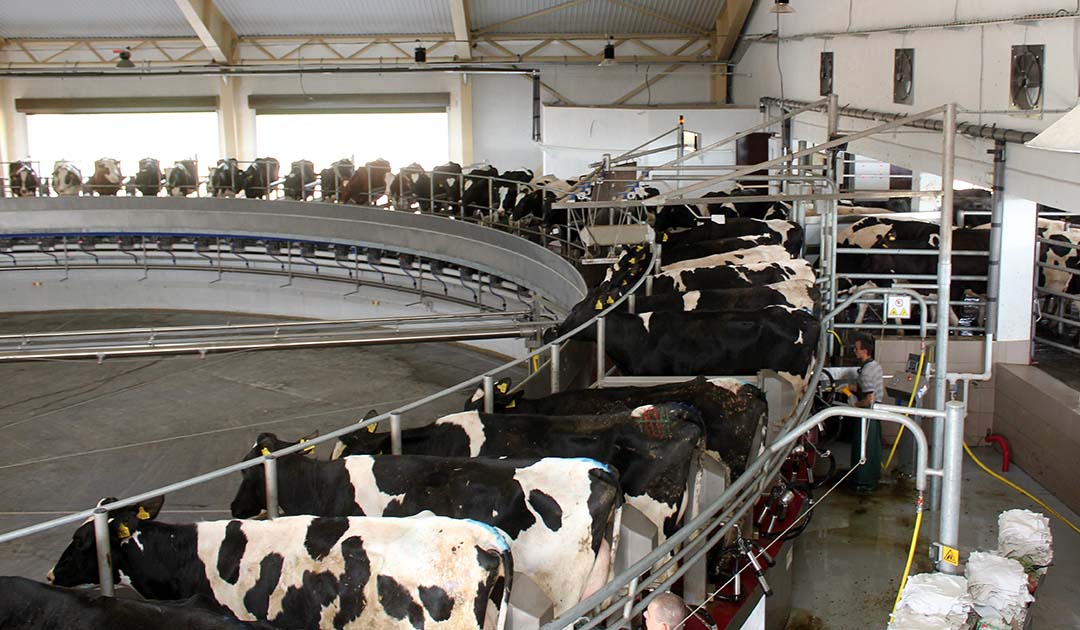
The new barn, he says, measures 97m wide and 356m long and is equipped with 114 fans or ventilation control. In that shed we use freshly separated solid manure at around 60% moisture as bedding, produced by 6 automated screw separators next to the cowshed.
Breeding and feeding
The farm currently works with Semex and Alta Genetics to achieve its breeding strategy selecting bulls for 60% productivity, 20% fertility and 20% health.
Serhiy adds: “Around 75% of cows and heifers are inseminated with sexed semen. Over the past 12 months, we have added 1,610 heifers into our herd. After defeating the Russian occupiers, we plan to breed and sell embryos.
“Before the war our farm was well-known in Ukraine, but also in Asian countries as we have a strong reputation for breeding quality heifers. We use enough sexed semen to produce replacement heifers for our farm and meet the demand for heifer sales.
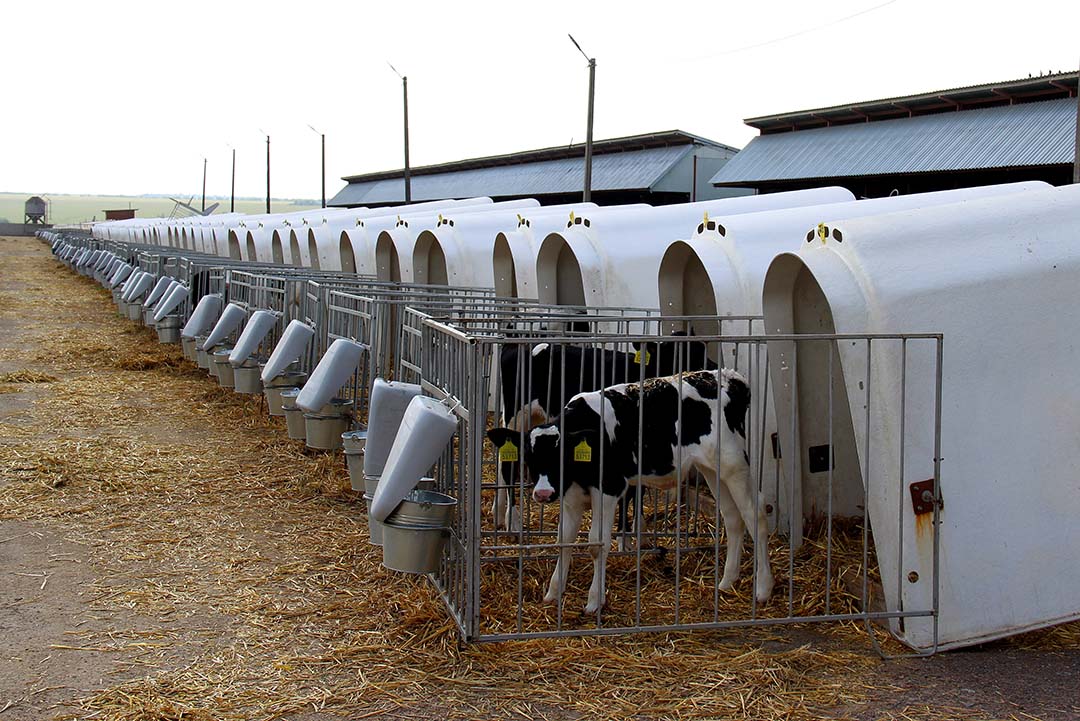
“That’s why we built our own feed mill. Every day, 150 tonnes of feed are prepared just for dairy cows. High-yielding cows consume 26-27kg DM per day, and 4 feed mixers work simultaneously, making up to 30 mixes per day.”
Around 1,000 calves are kept in igloo housing and are fed 12l pasteurised milk per day for up to 80 days with 1.5 kg of grain each. This produces a liveweight gain of around 900 g/day and a weaning weight of 105-120 kg.
Russia/Ukraine war – supplying armed forces
During the war, Promin dairy farm has continued to milk the cows and deliver it to the processor, thanks to the farm being equipped with generators, fuel reserves and their own trucks. Several batches of raw milk were delivered to the Pervomaisky milk canning plant that supplies the Armed Forces.
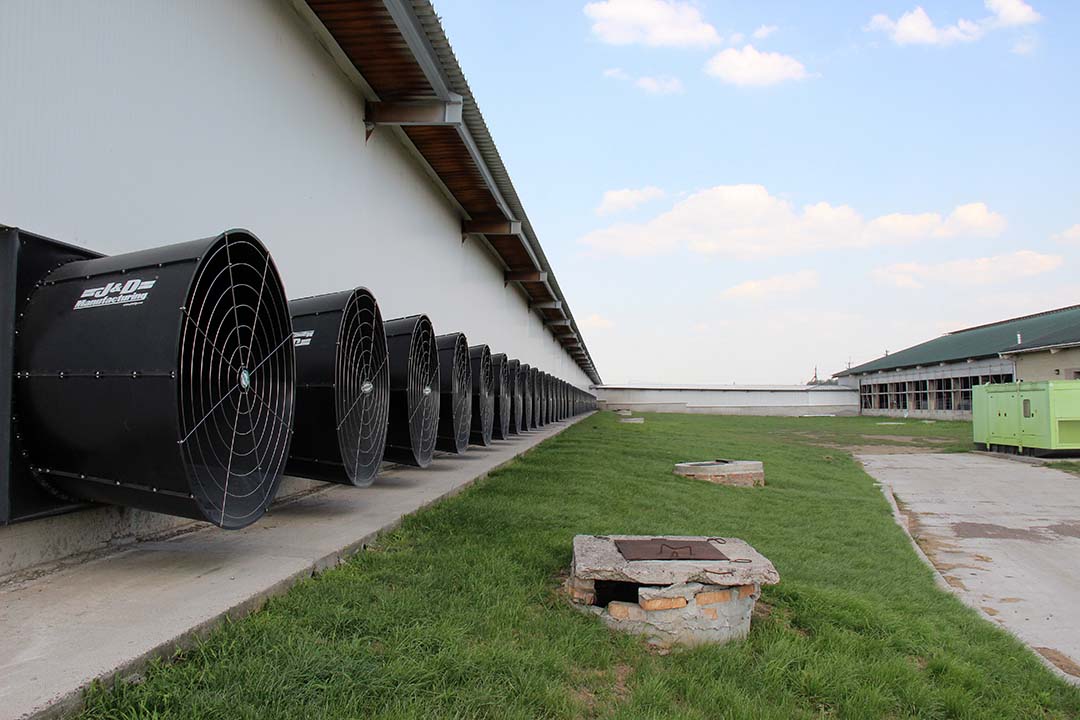
The war has affected the supply chain of agricultural goods and services in Ukraine, particularly veterinary medicine. Among other actions, by reducing the feed wastage from 8% to just 2%, the farm managed to save up to 8 tonnes of fodder per day.
Serhiy says, “When medicines ran low we sent one of our staff on a bus to Kyiv and Dnipro to pick up more supplies. We also gave up sexed semen for 5 months, because we couldn’t sell the heifers or increase the herd in war times. At least the bulls were less costly to rear and were easier to sell.”
Challenges
“Our main problem at the moment is trying to find a market for our grain. We have a lot of last year’s harvest left over and are always on the phone trying to sell. There is also a problem with finding staff as there is a shortage of workers. Out of all our 350 people employed we lost 40 of them who were mobilised to the Armed Forces. Now we have to recruit people from neighbouring villages, organise mini-buses to bring them to the farm and take them back home, and repair roads.
“Finding a replacement for a qualified milker or tractor driver is not an easy task. Recently, during a meeting, our managers joked that the fashionable phrase ‘recruiting of personnel’ will soon have to be replaced by ‘headhunting’.
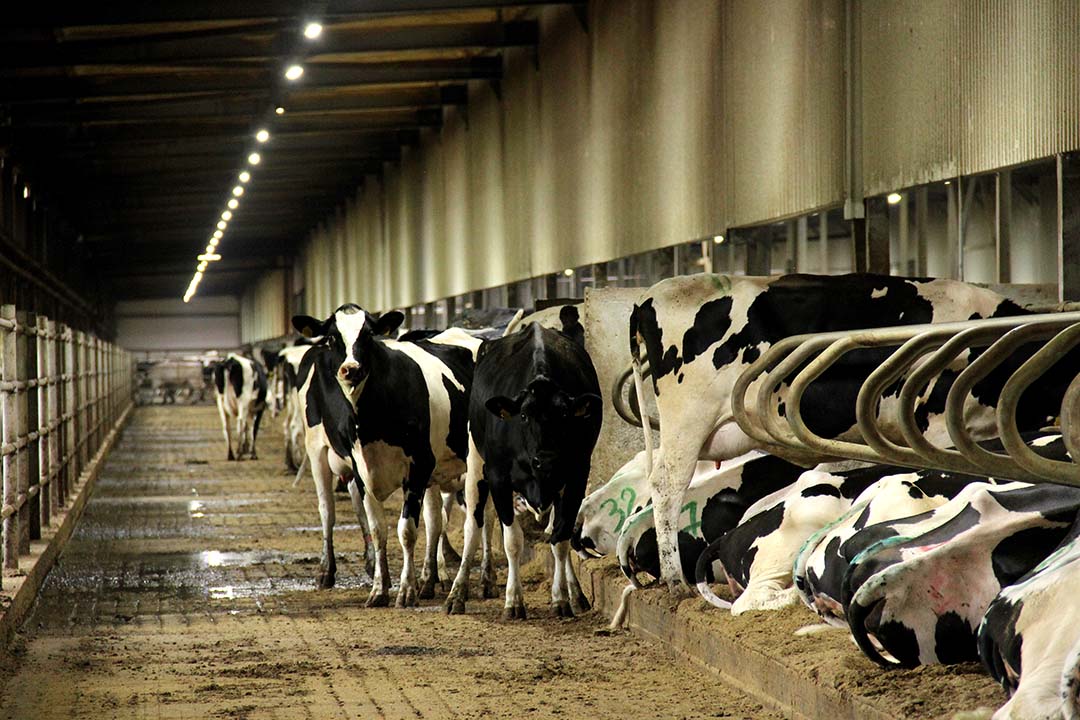
“Right now, for example, in the new milking parlour we try to carry on with the experienced milkers that we already have. People work a shift and a half for good extra pay, and so far they seem to cope with such an additional load. But the number of cows is growing and we need to find 20-25 more workers.
“Young people are sadly not very willing to work on a farm. It is more difficult to convince and attract them, but if they have already joined, they are just right to form the team that is ready to new work approaches and new technologies.
“Our electricity bill for the last 2 months is around 6 million hryvnias (£130,000). And this is not the end; tariffs will increase. And our needs are growing, because production capacity is increasing. For example, when we put another cowshed into operation, it will need an extra 400 kWh,” he said.
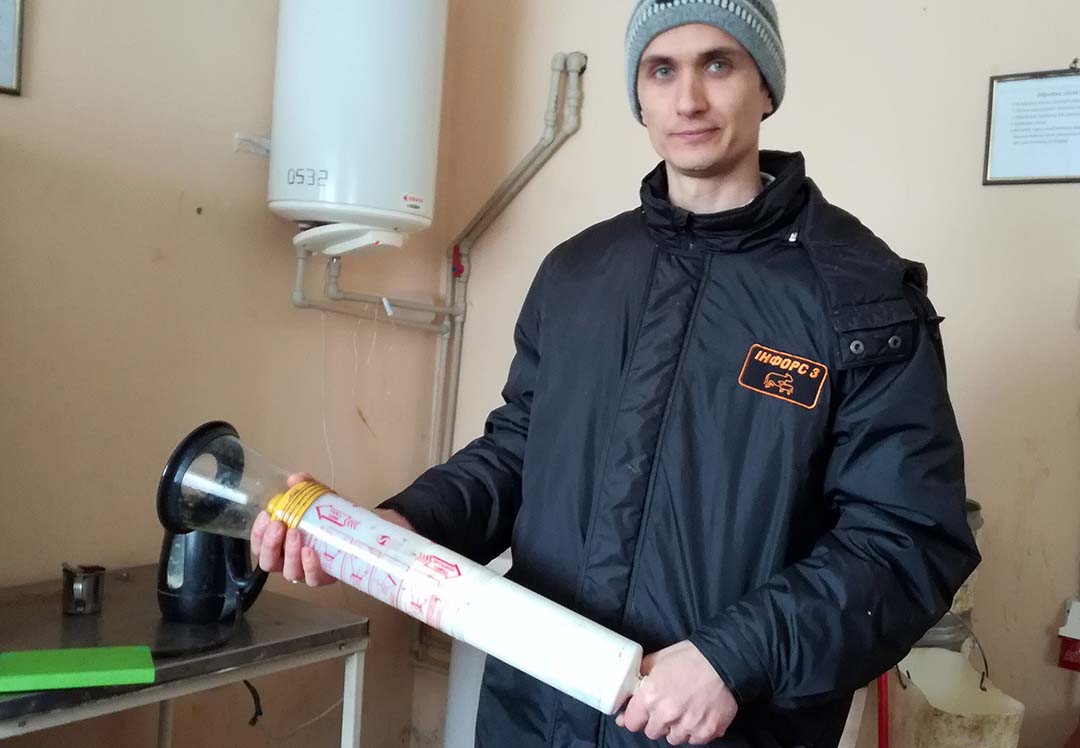
In the future the farm is considering building its own biogas plant to create its own energy from the abundance of manure it produces. “Pre-project calculations have been made, which show that it is possible to obtain up to 800 cubic metres of biogas per hour from the available raw materials and generate up to 2MWh of electricity. This is quite enough to meet our own needs.
“The biggest challenge now is the war and the intensifying attacks of Russians on objects of energy infrastructure and also drones and rocket attacks on objects of grain storage facilities and infrastructure of river ports,” he states.
Join 13,000+ subscribers
Subscribe to our newsletter to stay updated about all the need-to-know content in the dairy sector, two times a week.




